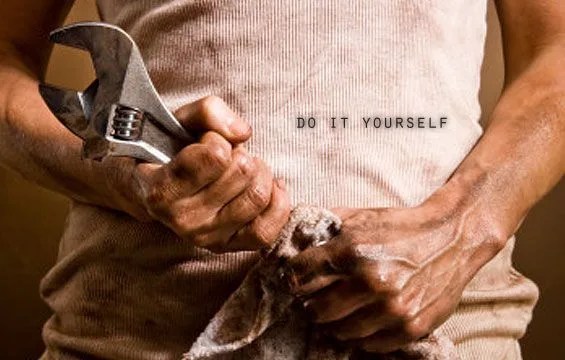
You are a man. Should you set your mind to something, it’s unlikely that any force can stand firm against your resolute will. That’s why I want to encourage you to cast doubt and fear from your mind with regard to those home improvement projects that are steadily piling up around your ankles. You are a man, master of your domain.
On the other hand, hindsight has proven many a would-be Bob Villa to be harebrained in his scheming, ill-equipped in his outfitting, and ill-advised in his execution. Quite frankly, I do not wish to find you reduced to a quivering pile of man-goo by a chore that you just couldn’t tame. That’s why we’re going to discuss what you should definitely tackle on your own, how you ought to go about it, and what things are better left to the professionals.
First off, you can write an article for Gear Patrol. Get the rest of the dos and don’ts after the jump.
Why Wouldn’t I Just Pay Someone To Do That?

Let’s just say it. The economy sucks. Pretty much any and all real estate inventory is sitting in some degree of stagnation. That’s one reason that a lot of people are hunkering down in their existing homes and choosing to make upgrades or repairs to improve its value and livability. That’s what this writer is up to, anyway.
It’s in that same vein that I submit to you, all machismo aside, that choosing to tackle projects and fixes around your domicile via D.I.Y. skills can save you some serious cash. In my three years as a homeowner, I’ve managed several high-frugal success stories that spurred me to an unshakable belief in the “git ‘er done” mentality. Among other smaller jobs, they include:
- Replaced whole house carpet with laminate flooring – Saved $1,500
- Installed new ceiling fans and lighting – Saved $450
- Interior painting – Saved $1,500
- Minor plumbing repairs – Saved $300
- Designed and built garden/tool shed – Saved $900
In case you can’t add (like me), that’s nearly $5,000! I don’t list these accomplishments to brag, rather I share them with you to say, “If I can pull it off, then so can you!” See, I’m just a regular guy. I don’t have any special training, construction experience, or even rudimentary math skills. I do have great hand-eye coordination (from growing up on video games, no doubt), but, then again, I did almost shoot myself with a nail gun once, so my competence is questionable. I digress. My point is this: you always need more “gear money” and you’ll really enjoy spending the cash that you saved by doing a project yourself.



